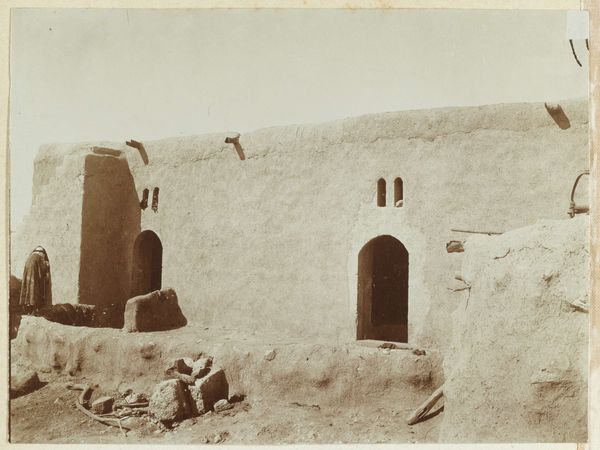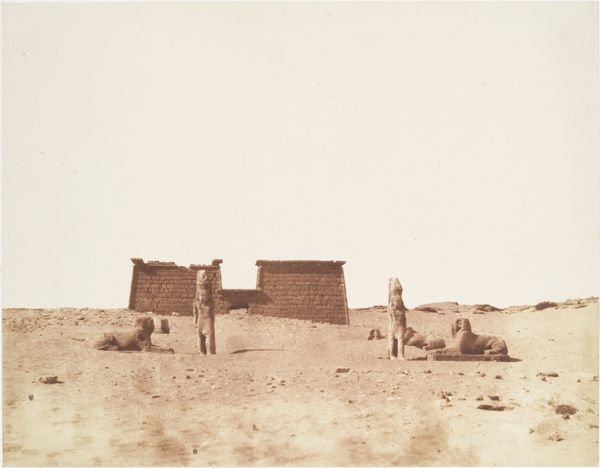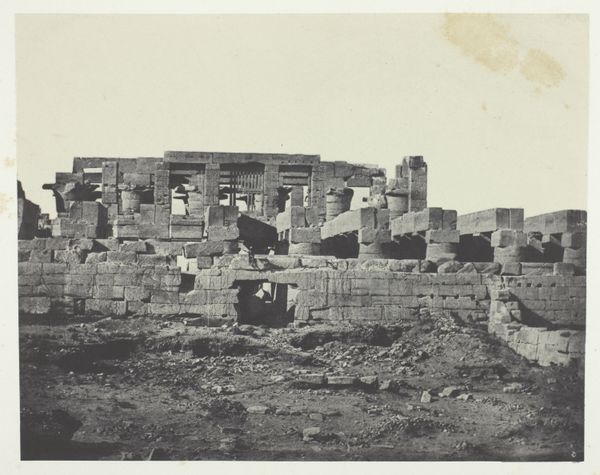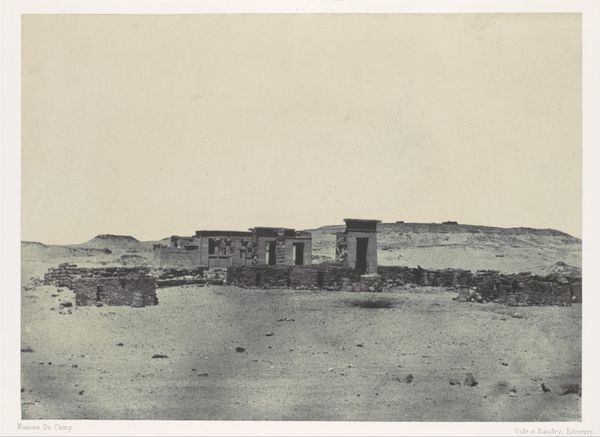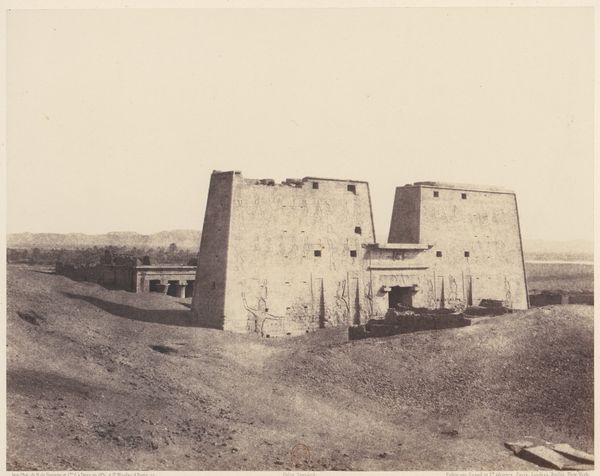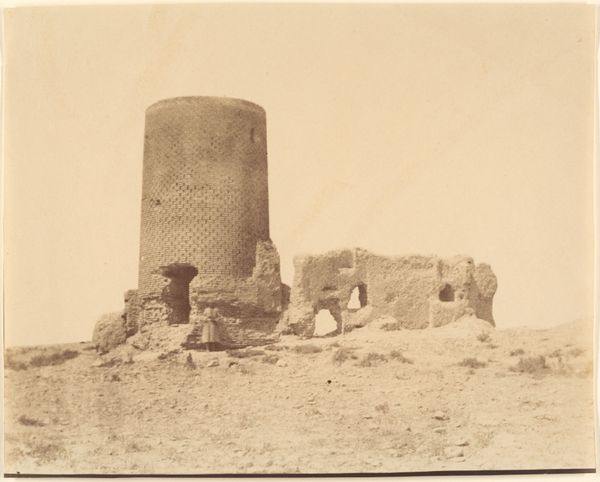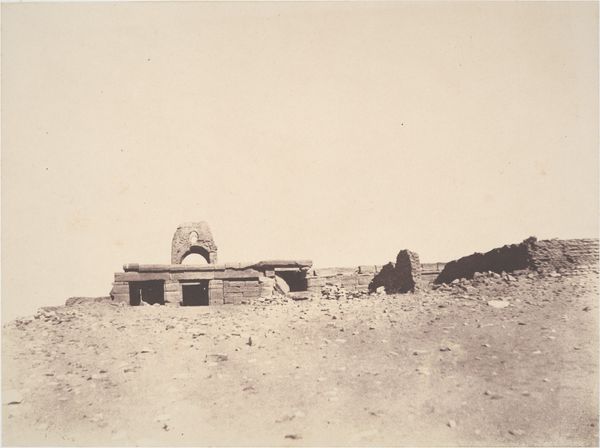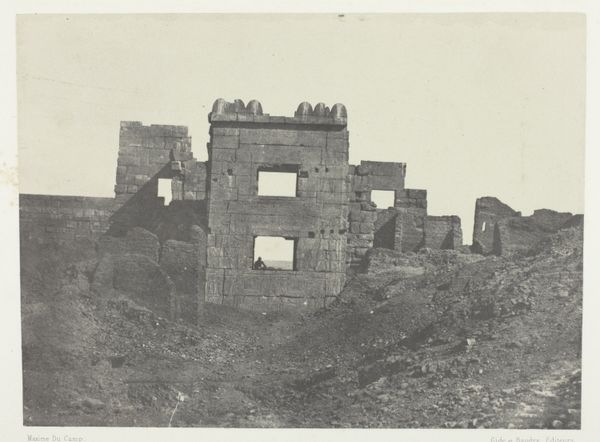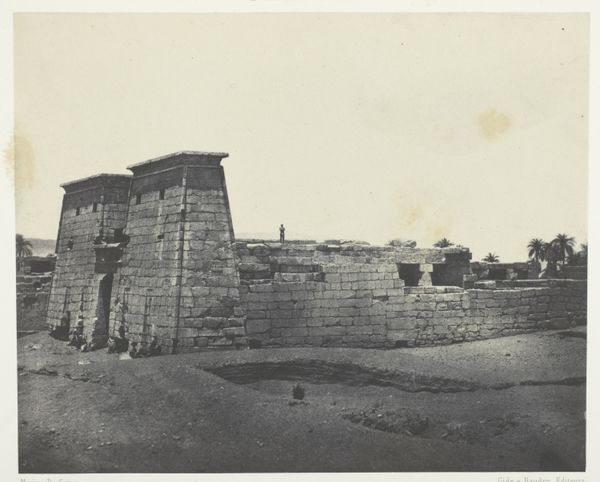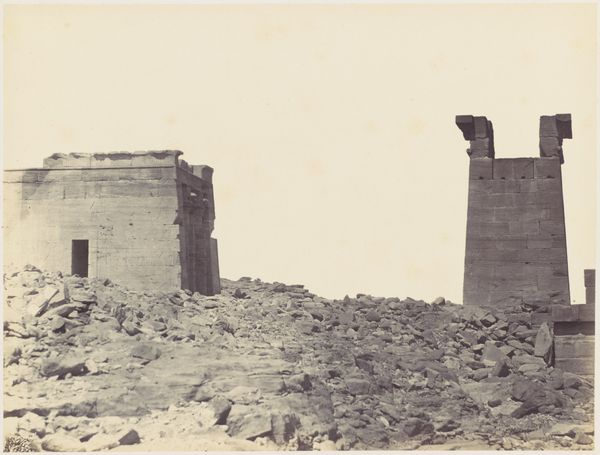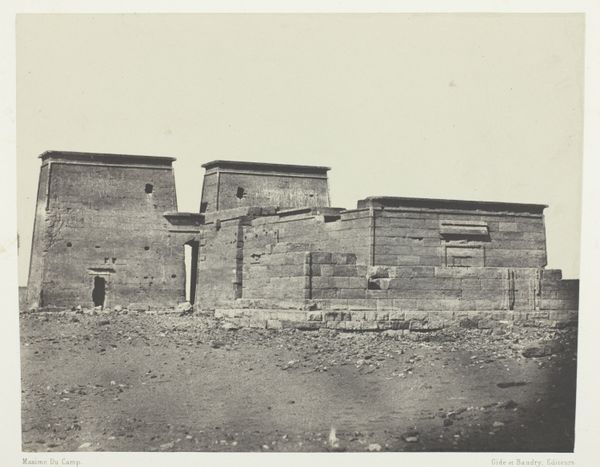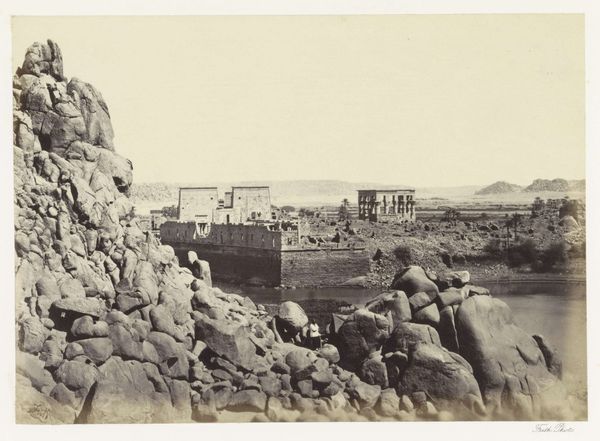
Hémi-Spéos De Séboua, Drômos; Nubie Possibly 1849 - 1852
0:00
0:00
print, paper, photography, site-specific
#
16_19th-century
# print
#
war
#
landscape
#
ancient-egyptian-art
#
paper
#
photography
#
egypt
#
ancient-mediterranean
#
site-specific
#
france
Dimensions: 16.7 × 22.1 cm (image/paper); 30.1 × 42.9 cm (album page)
Copyright: Public Domain
Maxime Du Camp created this photograph of Hémi-Spéos De Séboua in Nubia using a paper negative sometime in the mid-19th century. Note the imposing sphinxes guarding the temple entrance, symbols of royal power and guardians of sacred spaces in ancient Egypt. These composite creatures, with the body of a lion and the head of a human, embody strength and wisdom. We see echoes of this motif across cultures and millennia. Consider the winged bulls of ancient Assyria or the Greek Sphinx, each adapted to their cultural context, yet all sharing the common thread of guarding secrets and testing the wisdom of those who dare approach. It is a testament to our enduring fascination with hybridity and the potent symbolism of merging human intellect with animal strength, a psychological projection of our own inner duality and our quest for higher knowledge. This imagery is not linear, but cyclical, reappearing and transforming across time.
Comments
No comments
Be the first to comment and join the conversation on the ultimate creative platform.
